Share This:
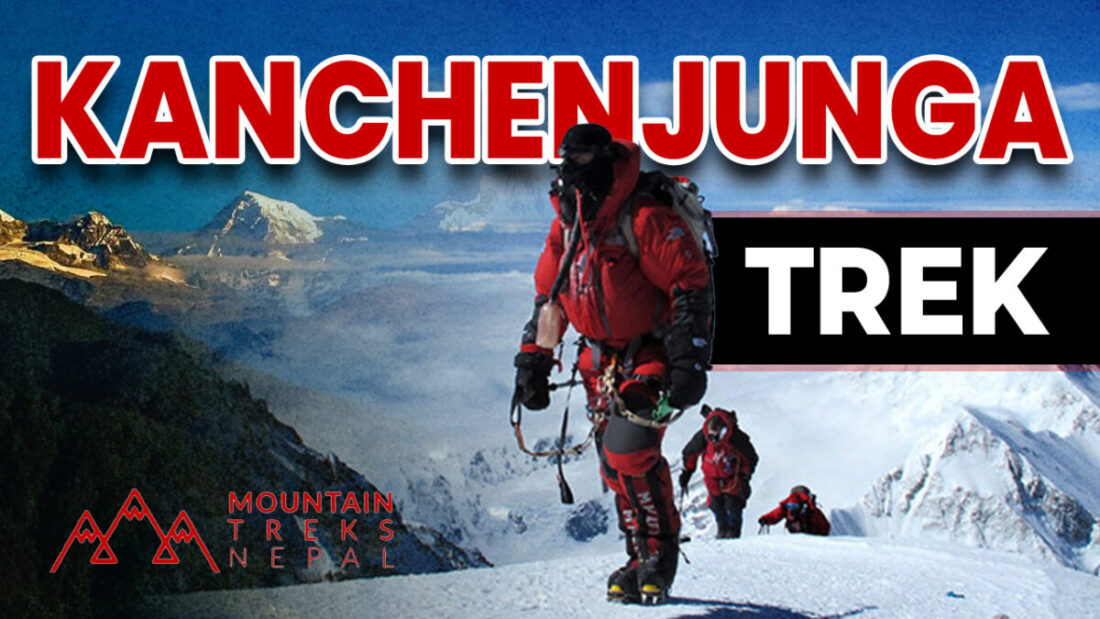
Kanchenjunga Circuit Trek – A Journey into Nepal’s Untamed East
Highlights with Mountain Treks Nepal
- Discover the remote realm of Mt. Kanchenjunga (8,586m), the world’s third-highest peak
- Venture deep into one of Nepal’s most restricted and untouched trekking regions
- Follow a trail steeped in mystique, far from the crowds, rich with awe-inspiring Himalayan vistas
- Trek through the Kanchenjunga Conservation Area, teeming with rare wildlife and vibrant flora
- Experience authentic village life, ancient Buddhist culture, and serene monasteries
- Cross rugged high passes, daring suspension bridges, pristine meadows, and dense forests
- Reach the mesmerizing North Base Camp of Mt. Kanchenjunga
- Ideal for seasoned trekkers seeking raw beauty, solitude, and serious adventure
Hidden in the far eastern frontier of Nepal, bordering Sikkim, India, the Kanchenjunga Circuit Trek remains one of the last true wilderness trails in the Himalayas. It’s a secluded, less-trodden route where only a few adventurers dare to go shielded by strict permit regulations and the physical challenge of its remote terrain.
This trek encircles the majestic Mt. Kanchenjunga, offering an immersive journey to both the North and South Base Camps. At Mountain Treks Nepal, we offer both full-circuit itineraries and custom treks to either base camp, designed to suit your fitness level and adventure goals.
Also known as the Kanchenjunga Base Camp Trek, this route demands prior trekking experience due to its rugged landscapes and elevation. It’s not for solo trekkers and requires a licensed guide, which is where our expert team comes in ensuring your safety, comfort, and an unforgettable experience.
Compared to better-known routes like the Annapurna or Manaslu Circuit Treks, Kanchenjunga stands out for its raw remoteness, untouched landscapes, and cultural authenticity. If you’re yearning for something beyond the ordinary deep solitude, alpine drama, and Himalayan magic Kanchenjunga Circuit Trek 2025/2026 awaits.
We’re now open for early bookings for Spring and Autumn 2025 & 2026. Secure your spot and let Mountain Treks Nepal guide you through this epic Himalayan quest.
Unforgettable Himalayan Views on the Kanchenjunga Circuit Trek
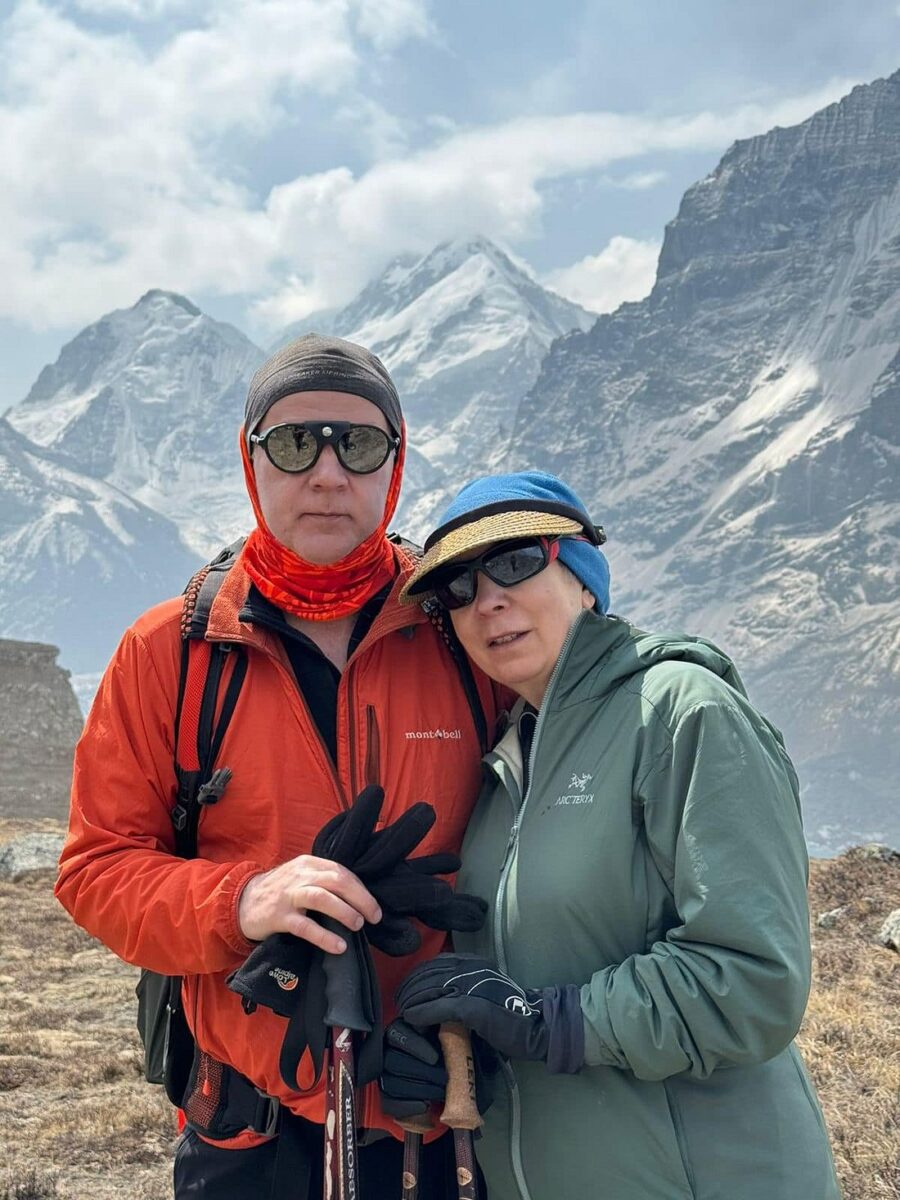
Trekking the Kanchenjunga Circuit is like stepping into a living postcard of untouched wilderness. Along the trail, you’ll encounter the dramatic Yalung Glacier, set against an unspoiled Himalayan backdrop that evokes a powerful sense of nostalgia as if you’re returning to a forgotten home, frozen in time.
This entire region is safeguarded by the Kanchenjunga Conservation Area, a protected and restricted zone that requires a special government-issued trekking permit. This exclusivity is part of what makes the journey so rare and rewarding.
The landscape is not only breathtaking but biologically rich. Dense alpine forests, cascading waterfalls, and high-altitude meadows host a wide variety of wildlife. With a bit of luck, you might catch a glimpse of red pandas, Himalayan black bears, snow leopards, musk deer, or even rare highland birds. The biodiversity here is as awe-inspiring as the peaks themselves.
Add to that the mystical element local folklore of the Yeti, the elusive snowman said to roam these remote highlands. Whether myth or truth, these stories add a layer of mystery and cultural depth to your trek.
Visually, the Kanchenjunga Circuit offers panoramic displays of towering giants like:
- Tent Peak (5,663 m)
- Kambachen (7,902 m)
- Janu (7,710 m)
Mt. Everest (8,849 m) - Makalu (8,463 m)
- Lhotse (8,516 m)
Each viewpoint offers a surreal reminder of the raw power and majesty of the Himalayas. With Mountain Treks Nepal, you’ll not only see these mountains you’ll feel them in your soul.
Why Choose Mountain Treks Nepal for the Kanchenjunga Circuit Trek?

The Kanchenjunga Circuit Trek isn’t your typical Himalayan adventure it’s more remote, more rugged, and deeply connected to the cultural heartbeat of eastern Nepal. To truly experience its essence, you need more than just a guide; you need a local expert who understands the terrain, the people, and the rhythm of life in this hidden corner of the Himalayas.
At Mountain Treks Nepal, our treks are led by experienced native guides who were born in the mountains and have walked these trails their entire lives. They don’t just lead the way they open doors to genuine cultural encounters, local insights, and a smoother, safer journey.
We pride ourselves on offering a flexible and fully customizable Kanchenjunga Circuit Trek itinerary, tailored to your pace, interests, and comfort level. Whether you’re looking for a full circuit experience or a focused route to just the North or South Base Camp, we’ll shape the perfect trek for you.
Our policies are 100% transparent no hidden fees, no fine print. As passionate mountain adventurers ourselves, we believe in fair travel and building trust through honest communication and reliable service. With over 20 years of trekking and guiding experience, Mountain Treks Nepal is not just a company it’s a community of travelers and locals walking together on remarkable journeys.
Looking for More Adventures?
We also offer hand-picked trekking experiences like:
- Everest Base Camp Trek – Walk to the foot of the world’s highest mountain
- Annapurna Base Camp Trek – A classic blend of mountains, culture, and natural beauty
- Mardi Himal Trek – A short but scenic off-the-beaten-path gem
- Nar Phu Valley Trek – A hidden Tibetan enclave in the Annapurna region
Detailed Itinerary
Day 1
Arrival in Kathmandu (1400m | 4593ft)
You will be received by the representative of Mountain Treks Nepal upon your arrival at Tribhuvan International Airport, Kathmandu. You will be taken to your hotel in a private vehicle, where you may relax and settle down. Later, you can explore the lively streets of Thamel, which is a hub for tourists with lots of shops, cafes, and historical sites.
Day 2
Trekking Preparation Day (1400m | 4593ft)
On the second day of the journey, before setting off onto the Kanchenjunga Circuit Trek 19 Days, we will keep time for preparation. You will meet your team manager at around 9:00 a.m. who will collect your passport to process the trekking permits. In the afternoon, you will meet with your trekking guide, who will check your gear and recommend items to buy or rent from trekking shops in Thamel.
Day 3
Flight to Bhadrapur and Drive to Illam (1627m | 5338ft) or Taplejung (1820m | 5971ft)
The third day starts in Kathmandu with a warm breakfast at your hotel. You will then be escorted to Tribhuvan International Airport to board a flight to Bhadrapur. After arriving at Bhadrapur, you will catch a drive to the Illam district to reach the starting point of the Kanchenjunga Circuit Trek 19 days.
The journey is complete with a scenic drive through the beautiful tea gardens of Kanyam. Depending on the time, you will either stop at Illam or carry on to Taplejung, the town that stands at the threshold of the Kanchenjunga Circuit.
Day 4
Drive to Sekathum (1650m | 5413ft)

The adventure continues with a jeep ride across rural villages for the crossing of Tamor above its river while going through Kanchenjunga National Park checkpoints. Along the trail toward Sekathum, you’ll pass the charming little hamlets of Mitlung, Chirwa, and Thapethok.
This long drive promises to give you a sneak peek into the vibrant local daily lives and untouched, pure, beautiful nature. Rugged terrain combined with great scenic beauty brings a memorable start to your trek.
Day 5
Trek to Amjilosa (2498m | 8195ft)
The 19 Days Kanchenjunga Circuit Trek starts as you climb steep slopes navigating through thick vegetation and moving across multiple suspension bridges along the Ghunsa Khola river. You will first reach Jonggim and Ghaiyabari before you settle in Amjilosa.
This day’s trek is a wonderful way to warm up for the Kanchenjunga Circuit both in terms of geography and culture. Amjilosa, an otherwise unremarkable village is a place to spend the night in peace.
Day 6
Trek to Gyabla (2725m | 8940ft)
The route to Gyabla is one we do not want to forget any time soon, with rhododendron and bamboo forests, and glimpses of waterfalls in the distance to the sweet scent of nature. It is a steady climb broken up with relaxing periods in mother nature.
It is a peaceful little village called Gyabla, where stunning mountains surround the community with truly awesome views. It is recommended to rest here before the wait is over as you sit atop mountains.
Day 7
Trek to Ghunsa (3415m | 11204ft)
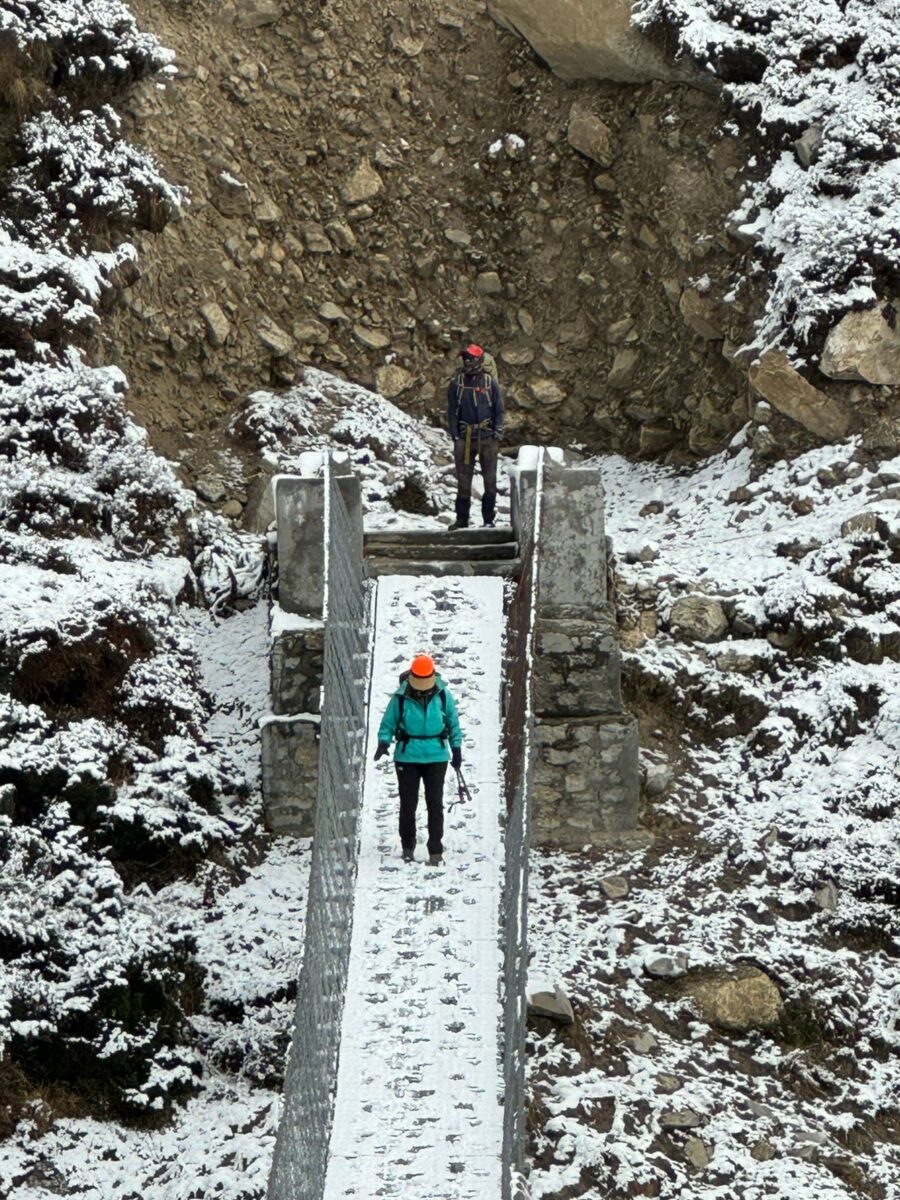
In this day’s trek, allow yourself to be captivated by the variety of landscapes from the gorgeous hills to the open lands, including Ghunsa, a Tibetan cultured village. You must traverse through the rugged terrain passing through the woods to reach Phale village first. This village is known for its notable wooden architecture.
Ghunsa village is considered the starting point for trekkers and climbers for the treks in Kanchenjunga region. Featured with the Buddhist vibes, you can have views of mani walls, and prayer flags surrounding the settlements in Ghunsa.
Day 8
Trek to Khambachen (4145m | 13599ft)
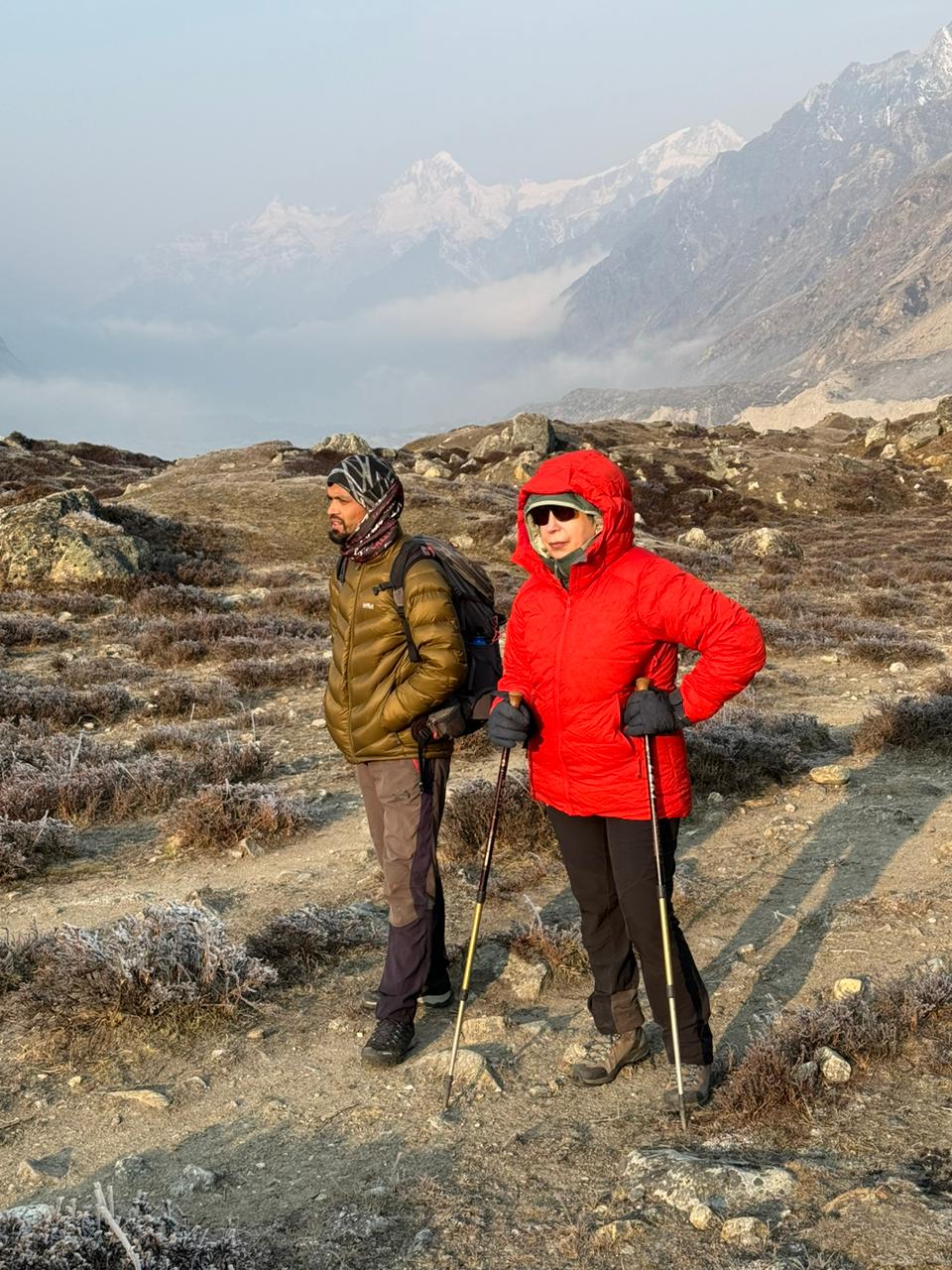
The eighth day of the Kanchenjunga Circuit Trek 19 Days takes you all the way from Ghunsa and Khambachen. The trail passes through the pine forest taking you to the area where you might encounter wild animals such as blue sheep or even snow leopards. Similarly, you will traverse on areas that are landslide-prone while taking in a breathtaking view of Mount Jannu, on the other side before arriving at Khambachen.
Khambachen is a very little settlement located at a high altitude with the most amazing views of the glacier valleys. It is a beautiful settlement with high mountains all around where you can relax and acclimatize your body.
Day 9
Acclimatization and Rest Day
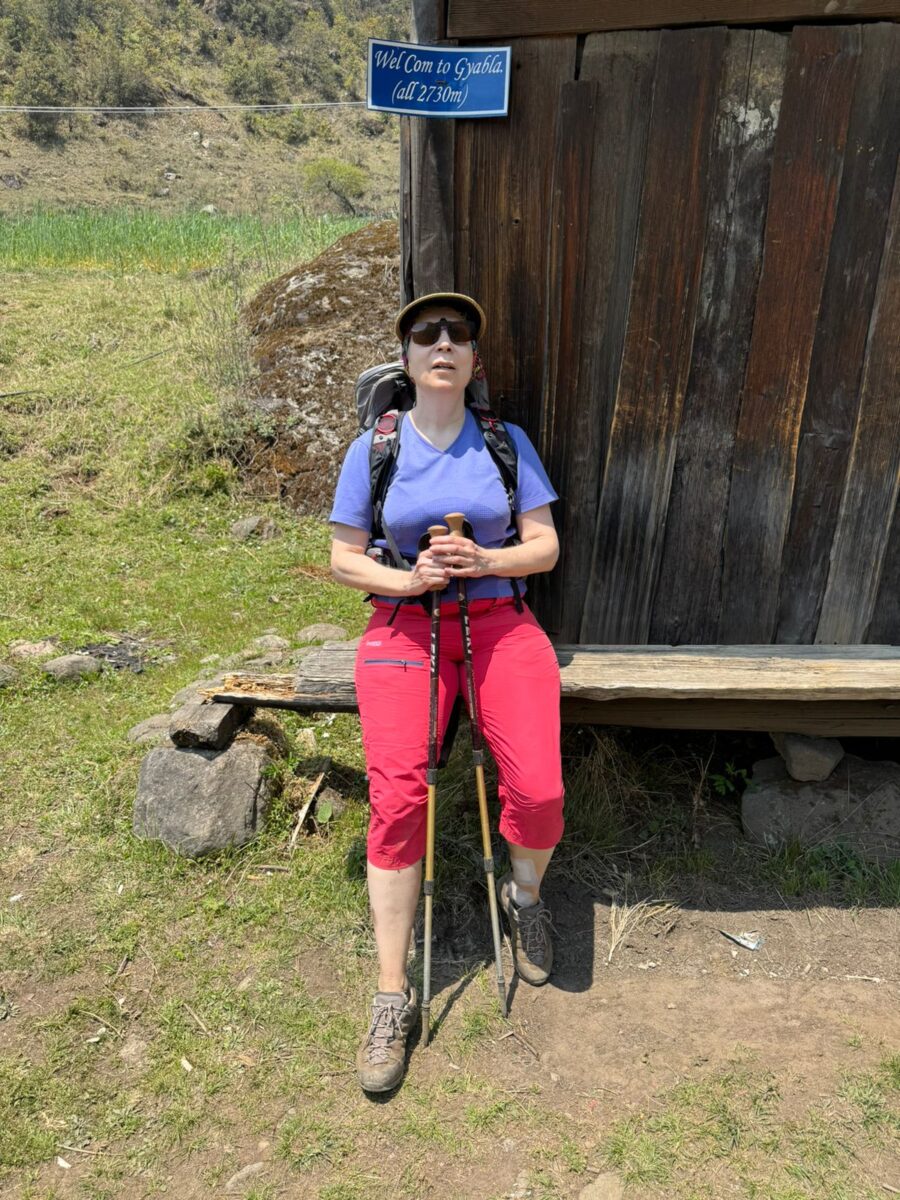
Today is the day to rest and acclimatize in Khambachen. As we have already reached over 4100 meters above sea level, health hazards like altitude sickness can be a serious problem. In the meantime, you can take a short hike to nearby glacial outlets or viewpoints.
Remember, to acclimatize you must focus on proper nutrition and hydration. Get enough rest and sleep and pack your medication if you have any medical conditions.
Day 10
Trek to Lhonak (4792m | 15721ft)
As the tenth day starts, you will have an early morning breakfast and then catch a trail to Lhonak. The trail passes through the Ghunsa Khola and Kanchenjunga Glacier. You’ll then navigate steep slopes and cross moraines, surrounded by awe-inspiring peaks like Wedge Peak, Nepal Peak, and Twins.
Lhonak is a high-altitude campsite which sits at 4792 meters above sea level. From this place, you can have breathtaking views of the Himalayas to the North but be ready to prepare for its freezing cold temperature and remote location.
Day 11
Hike to Kanchenjunga North Base Camp and Return to Lhonak
It is an exciting trek from Lhonak to Pang Pema, which is known as the Kanchenjunga North Base Camp. The pathway created by the glacial moraines leads up to a beautiful view of the third-largest mountain in the world, Kanchenjunga. Remember, this phase of trek is not as easy as the inital phase, so make sure that you are well geared up.
After exploring the North Base Camp, you will return to Lhonak for a rest enjoying traditional Nepali cuisine.
Day 12
Trek to Ghunsa (3415m | 11204ft)
On day 12, you will retrace back to Ghunsa Village. As you retrace your steps back to this village, you descend through the same once-familiar trails passing through lush green forests and rugged terrains. This unique perspective of familiar landscapes comes as you finish your journey.
This downhill trek is not really more difficult, but it is very similar in merit and takes much time to appreciate the gorgeous scenery of the Kanchenjunga region.
Day 13
Trek to Sele Le Base Camp (4240m | 13910ft)
The way to Sele Le Base Camp is a majestic climb where dense forests are seen, and depressions can be filled with the scarce sight of wildlife spotted, like those snow leopards. The region is so far flung that it has very few settlements, but it is very interesting and exciting to traverse through the changing landscapes.
Sele Le Base Camp is a heavenly view point, offering you the best views of the Himalayas and glacial moraines around. Overnight stay at Sele Le Base Camp.
Day 14
Trekking Day to Tseram (3868m | 12690ft)
The fourteenth day of the Kanchenjunga Circuit Trek takes us to Tseram from Sele Le Camp. The trek is still over 3800 meters above sea level, so proper preparation for high altitude should be made. The trek covers three high passes-Sinon La, Mirgin La, and Sinelapche Bhanjyang-these offer grandiose views of Everest, Makalu, and Kanchenjunga.
On the way down, you will find yourself at Tseram-a beautiful and peaceful place in the midst of breath-taking mountain scenery. This is part of the day when one could say the trek peaks.
Day 15
Trek to Oktang Viewpoint and Back to Tseram
Today, you will hike from Tseram to Yalung Glacier and Oktang viewpoint. From this place, you can have a magnificent view of the stunning Kanchenjunga South Base Camp and Himalayan peaks around it. You can also have the beautiful views of the glaciers that flow slowly down to the basin from up in the mountain.
This one-day trek is challenging yet fulfilling, as it rewards one with the view of pure, snow-capped mountains. After exploring the beautiful sceneries, you will ultimately head back to Tseram for an overnight stay.
Day 16
Trek to Tortong (2980m | 9776ft)
The journey from Tseram to Tortong is breathtaking every moment when it passes through trails showcasing snow-capped peaks. The trail winds through tall lush rhododendron forests that give bursts of color to the surroundings. You will cross the Simbuwa Khola along the way.
The greenery comes back as one enters Tortong, with imposing views of the Himalayas beyond. We will then descend back to Tortong and stay overnight with a warm dinner in a tea house.
Day 17
Trek to Yamphudin (1692m | 3910ft)
Today’s trek takes you through the beautiful terrain, mostly downhill, that we walk from Tortong to Yamphudin. There lies Amji Khola, the silent river flowing through the area. Next, we pass through Lasiya and Lamite Bhanjyang, and we can see the changes in elevation through vegetation and pure mountain air.
The community at Yamphudin is much more alive; here is a checkpoint for the Kanchenjunga Conservation Area, a familiar local culture, and the next travel phase awaits. Overnight stay at Yamphudin.
Day 18
Drive to Kanyam (1210m | 3969ft)
The trek from Yamphudin to Kanyam makes a complete change in the road from rugged mountain trails to the beautiful lowlands. You will drive along the pathways of Kabeli Khola to make a return to Kanyam.
Kanyam is known for its wide tea gardens, where you can have a peaceful time. These tea gardens give you the peaceful and ambient vibe which is also a paradise for photographers and videographers. After exploring tea gardens, you can explore the nearby towns or get a rest at your hotel.
Day 19
Return to Kathmandu
Our last day starts with a warm breakfast at a hotel and an explore session in Kanyam. After that, we will set off towards Bhadrapur, a drive of about 2 hours and 3 hours depending on the traffic and leaving the beautiful tea gardens behind.
The flight from Bhadrapur returns us back to Kathmandu. After reaching the city, you will be escorted to your hotel for rest. Finally, in the evening, the Mountain Treks Nepal team will host a farewell dinner and bid farewell.
Route Map

Kanchenjunga Circuit Trek Altitude Profile

The Kanchenjunga Circuit Trek is a true high-altitude adventure that takes you from subtropical lowlands to alpine terrain and glacier viewpoints, with elevations ranging from 1,400 meters to a high point of 5,143 meters.
Here’s what the altitude journey looks like over 19 days:
- Start low and slow: The trek begins at around 1,400 meters, allowing your body ample time to adjust through gradual elevation gain.
- Scenic elevation rise: From Day 3 to Day 7, you’ll ascend steadily through rhododendron forests and traditional villages crossing elevations like 1,870m, 2,725m, and 3,415m.
- High-altitude highlights: Between Day 8 and Day 11, the trail climbs dramatically reaching up to 5,143 meters near the North Base Camp of Kanchenjunga. These are the trek’s most exhilarating and panoramic sections.
- Carefully managed descent: The return trail follows a balanced descent pattern, with rest stops and scenic recovery days, ensuring proper acclimatization and minimal strain.
At Mountain Treks Nepal, we’ve designed this altitude flow strategically for safe acclimatization, following best practices for high-altitude trekking. Our experienced guides are trained in altitude awareness and always prioritize your well-being on the trail.
Tip: Drink plenty of water, walk at your own pace, and listen to your guide. The changing elevation is part of what makes this trek both challenging and rewarding.
What’s Included in the Kanchenjunga Circuit Trek Package?
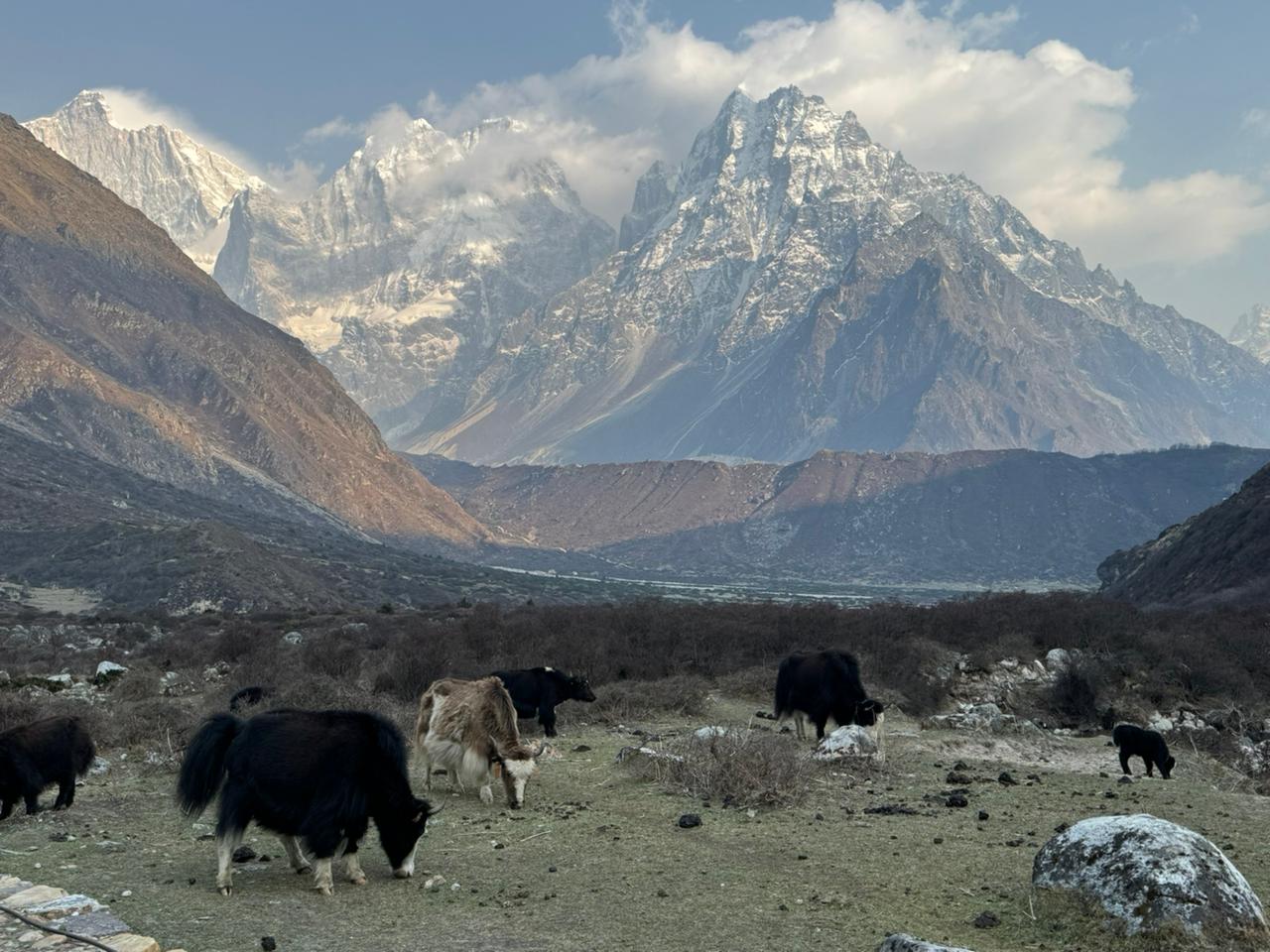
At Mountain Treks Nepal, we believe in providing transparent, all-inclusive trekking experiences. Here’s what your package covers:
Before and After the Trek
- Airport transfers (international & domestic) pickup and drop-off services included
- 2 nights hotel in Kathmandu before your trek (comfortable & centrally located)
Trekking Essentials
- All required special trekking permits for the Kanchenjunga Conservation Area (restricted region access)
- Accommodation during the trek in local teahouses and lodges
- Full meal plan during the trek (breakfast, lunch, dinner) with tea and coffee
- Government-licensed trekking guide, trained in first aid and high-altitude safety
- Guide’s salary, meals, accommodation, insurance, and equipment fully covered
Transport Logistics
- Domestic flights: Kathmandu ↔ Bhadrapur (round trip)
- Shared Jeep/Bus transport: Bhadrapur – Taplejung – Sekathum and Yamphudin – Kanyam – Bhadrapur
Additional Support
- First aid kit with basic high-altitude medication
- Sleeping bag and down jacket (available upon request – refundable after trek)
- Complimentary Mountain Treks Nepal T-shirt, trekking map, and water purification tablets
- All official expenses, local taxes, and government VAT included
What’s Not Included
To keep our pricing flexible and transparent, the following are not covered in your package:
- International flights to/from Nepal
- Nepal visa (on arrival or via embassy)
- Travel insurance covering emergency evacuation and high-altitude trekking
- Personal expenses during the trek (snacks, bottled drinks, Wi-Fi, etc.)
- Porter service – available at $400 (1 porter shared between 2 trekkers)
- Optional private jeep transport – $600 (if you prefer a private ride over shared)
- Meals in Kathmandu (lunch & dinner)
- Entry fees to temples or monasteries during city sightseeing
- Tips for the guide and porter optional but appreciated (industry standard practice)
Add-Ons & Upgrade Options
Our Kanchenjunga Circuit Trek package is designed to offer great value for budget-conscious adventurers. For those who wish to enhance comfort and flexibility, we provide optional upgrades you can add to your journey:
🧳 Porter Service – Travel Light, Trek Free
While the package includes a dedicated trekking guide, you can also choose to hire a porter to carry your heavier gear. Porters can carry 20–25 kg, allowing you to trek with just a light daypack and enjoy the trail more freely.
- Cost for one porter (shared between two trekkers): USD 400
💡 Highly recommended if you’re carrying camera equipment, winter layers, or simply want a more relaxed trekking pace.
🚙 Private Transportation – Flexible & Comfortable
The standard package includes shared local transport (jeep/bus) between key points of the journey:
- Bhadrapur → Taplejung → Sekathum
- Yamphudin → Kanyam → Bhadrapur
However, if you’d like a more private and comfortable ride, you can upgrade to private jeep transfers for either or both legs of the route.
- 🚐 Private Jeep (Bhadrapur – Taplejung – Sekathum): USD 300
- 🚐 Private Jeep (Yamphudin – Kanyam – Bhadrapur): USD 300
💡 Ideal for small groups or travelers who prefer personalized transfer times and additional comfort on long drives.
Kanchenjunga Circuit Trek Difficulty – What to Expect?
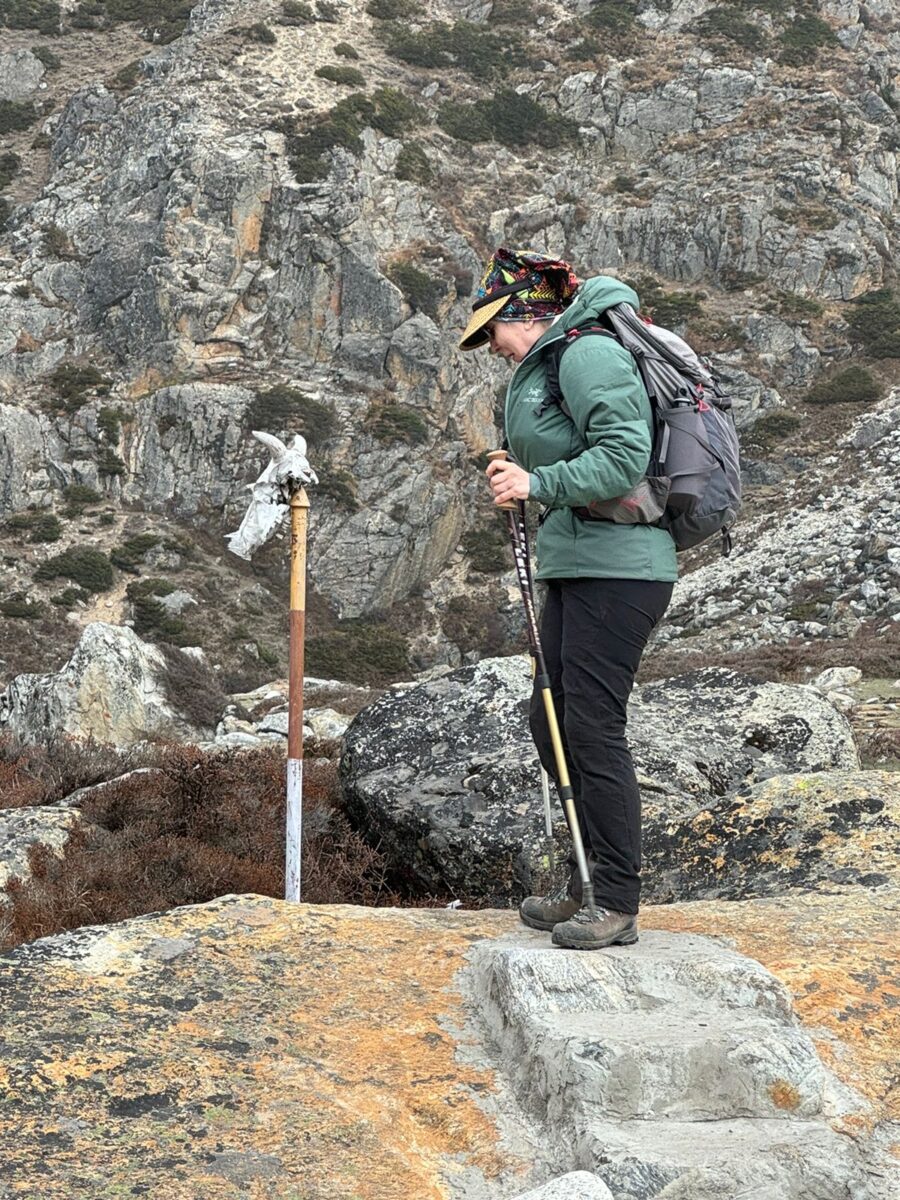
The Kanchenjunga Circuit Trek is considered one of the most remote and challenging treks in Nepal and for good reason. This is a wild, untamed route that demands physical endurance, mental resilience, and a genuine spirit of adventure.
What Makes It Strenuous?
- The trek spans over two weeks, with long walking days (often 7–9 hours per day)
- You’ll traverse rugged landscapes, cross high passes, navigate deep gorges, and ascend steep, rocky hills
- The region is extremely remote, with limited facilities and minimal infrastructure no modern comforts once you leave the main villages
- At higher altitudes, oxygen levels drop, making physical exertion more tiring than at sea level
Altitude Sickness (AMS) Awareness
Due to elevations exceeding 5,000 meters, you must stay alert for symptoms of acute mountain sickness (AMS). Even healthy, experienced trekkers are susceptible.
Common symptoms to watch for:
- Shortness of breath, even at rest
- Headaches or dizziness
- Nausea or loss of appetite
- Fatigue or disturbed sleep
At Mountain Treks Nepal, we take acclimatization seriously. Our well-paced itinerary, high-altitude-trained guides, and constant health monitoring ensure your trek is not only adventurous but also safe.
💡 We recommend prior high-altitude trekking experience, good physical fitness, and mental preparation for the remoteness and duration of this trek.
💪 Physical Fitness & Preparation for the Kanchenjunga Circuit Trek
The Kanchenjunga Circuit Trek is not just another hike it’s a demanding expedition through rugged, high-altitude terrain. Each day brings multiple ascents and descents, often across steep, uneven trails and through unpredictable mountain weather. To truly enjoy the journey (and not just endure it), being well-prepared physically and mentally is essential.
🥾 Why Fitness Matters
As you climb higher, the air gets thinner, and the cold intensifies, which can drain your energy much faster than at lower elevations. Trekkers cover long distances daily, often walking 7–9 hours per day, with limited access to comfort or amenities.
This is a remote tea house trek, so don’t expect luxury. You’ll need to adapt to basic lodging and services often paying extra for things like hot showers, phone charging, drinking water, or Wi-Fi.
How to Prepare
We recommend starting your physical training at least 6–8 weeks before the trek. Focus on:
🔹 Cardiovascular Endurance
- Long-distance walking or hiking
- Jogging or running
- Cycling or stair climbing
- Swimming for breath control and stamina
🔹 Strength & Core Training
- Squats, lunges, and leg presses (for uphill/downhill walking)
- Planks and crunches (for core stability)
- Light weightlifting or resistance training
🔹 Mental Preparation
Trekking in Kanchenjunga also requires mental resilience. You’ll be far from modern civilization, possibly trekking through snow or rain, and adjusting to high-altitude isolation. Keeping a positive mindset, staying flexible, and focusing on the beauty of the journey helps immensely.
💡 Prior trekking experience at high altitude is highly recommended. If possible, join shorter treks in Nepal or your home country to test your endurance and gear before tackling Kanchenjunga.
With the right preparation, this challenging adventure will become one of the most transformative and fulfilling experiences of your life and Mountain Treks Nepal will be with you every step of the way.
Best Time for the Kanchenjunga Circuit Trek

The Kanchenjunga Circuit Trek is best undertaken during Nepal’s two prime trekking seasons: spring (March to May) and autumn (September to November). These months offer the most stable weather, clear mountain views, and comfortable trekking conditions.
🌸 Spring (March to May) – Colorful Trails & Blooming Forests
Spring is an ideal time if you’re looking for a vibrant and scenic trek. The lower trails are alive with rhododendron blooms, wildflowers, and fresh greenery while the peaks remain beautifully snow-capped. Temperatures are moderate, and the days are longer, giving you more daylight to enjoy each stage of the trek.
✔Best for nature lovers and photographers
✔Clear skies, colorful landscapes, and stunning contrasts
🍂 Autumn (September to November) – Crisp Skies & Festive Vibes
Autumn is the most popular season for trekking across Nepal. After the monsoon, the air is clean and the views are at their sharpest. The trail is drier, and the atmosphere turns golden and crisp. It also coincides with Nepal’s biggest festivals like Dashain and Tihar offering trekkers a chance to witness local culture in full swing.
✔Best for cultural explorers and fans of dramatic mountain backdrops
✔Dry trails, excellent visibility, and festive energy in villages
💡 While off-season trekking is possible in winter or summer, it’s significantly more challenging due to snow closures or heavy rains. For safety and enjoyment, we strongly recommend trekking Kanchenjunga during spring or autumn.
Can the Kanchenjunga Circuit Trek Be Shorter Than 19 Days?
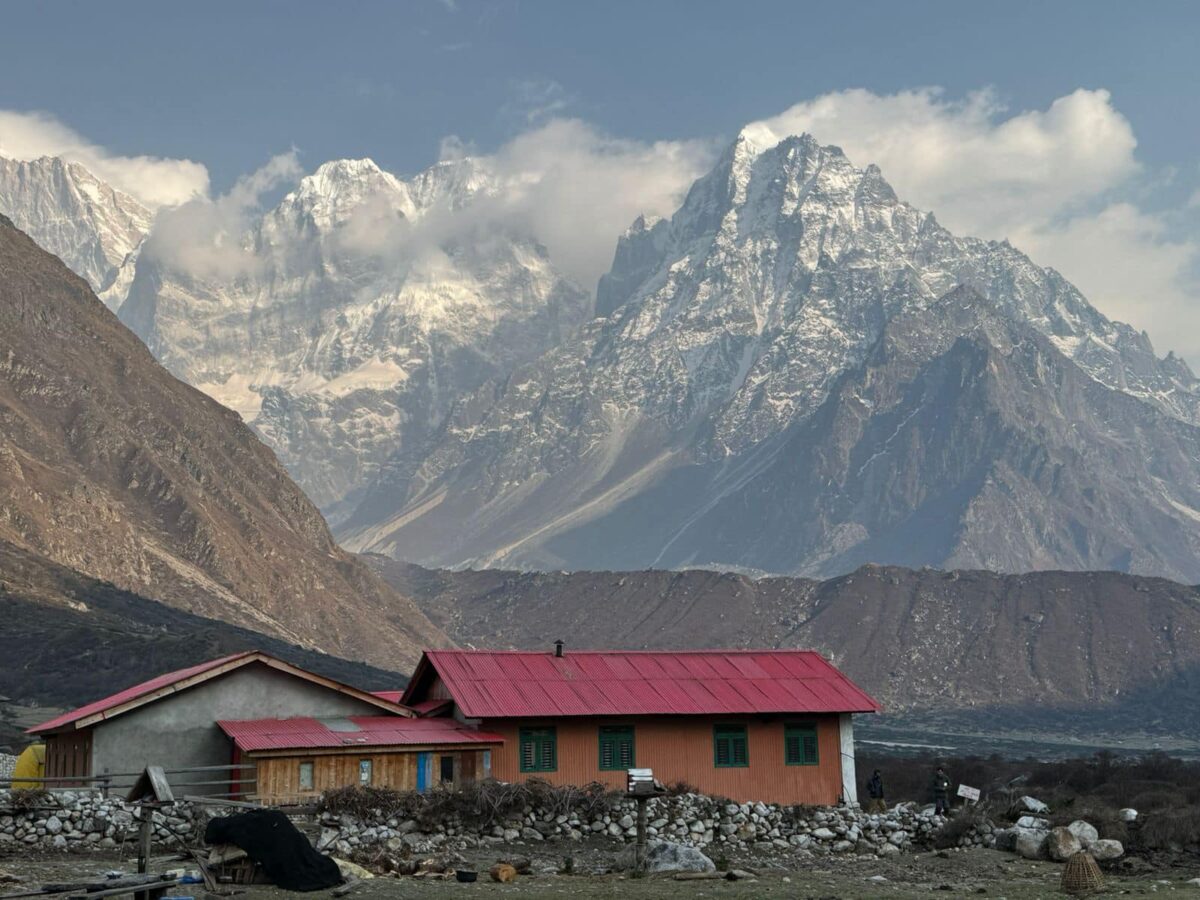
Yes, it can! While the standard Kanchenjunga Circuit Trek takes around 19 days, we understand that not every traveler has that much time to spare. At Mountain Treks Nepal, we offer customized and shorter trekking itineraries to suit your schedule and preferences.
✈Option 1: Fly Direct to Suketar – 13 Days
By flying directly to Suketar, instead of traveling overland, you can cut down on road travel time and complete the full Kanchenjunga Circuit in approximately 13 days without compromising the essence of the trek.
🧭 Option 2: South Base Camp Only – Less Than 10 Days
If you’re primarily interested in the South Base Camp of Mt. Kanchenjunga, we can organize a focused trek in under 10 days. Thanks to new road access up to Yamphudin, this route offers a quicker yet equally stunning Himalayan experience.
💡 These shorter options are great for trekkers with limited time, though they still require a good level of fitness and preparation due to the rugged terrain and altitude.
Let us know your availability, and we’ll tailor a Kanchenjunga trek itinerary that fits your timeline while still delivering the breathtaking adventure you’re looking for.
✈ Why We Don’t Fly Direct from Kathmandu to Suketar (Taplejung)
While it’s technically possible to fly directly from Kathmandu to Suketar and save a few trekking days, at Mountain Treks Nepal, we choose a different approach traveling via Bhadrapur and driving to Taplejung. Why? Because the journey is as much a part of the adventure as the destination.
By driving from Kathmandu to Bhadrapur, and continuing by road to Taplejung and beyond, you’ll:
- Explore Nepal’s diverse lowlands, filled with lush farmland and rolling hills
- Experience cultural richness in small villages along the way that air travelers often miss
- Gain deeper insight into rural life, traditional customs, and landscapes that gradually shift from tropical to alpine
This approach provides a more immersive trekking experience, allowing your body to gradually adjust to the elevation while offering opportunities for spontaneous cultural encounters and scenic photo stops.
💡 In contrast, flights to Suketar are often unreliable due to weather and limited schedules. Our overland route ensures smoother logistics and a more enriching journey overall.
🛂 Kanchenjunga Circuit Trek Permits – What You Need to Know
The Kanchenjunga region is a restricted trekking zone governed by the Government of Nepal. To protect its delicate ecosystems and maintain cultural integrity, special regulations apply and you cannot trek independently here.
At Mountain Treks Nepal, we arrange all permits on your behalf, and the cost is included in your trekking package so you don’t need to worry about the logistics.
Required Permits
- Kanchenjunga Conservation Area Permit (KCAP)
- Cost: NPR 2,000 per person (approx. USD 15)
- Required for entry into the conservation area
- Supports local conservation and environmental protection
- Kanchenjunga Restricted Area Permit (KRAP)
- Cost: USD 20 per person per week
- Mandatory for trekking in restricted areas of Taplejung District
- Issued only through a registered trekking agency
Important Guidelines
- Solo trekking is not allowed
The Nepal government requires a minimum of two trekkers in the group (excluding guides and porters). - Must trek with a licensed local company
All treks in the restricted zone must be organized through a registered Nepali trekking agency like Mountain Treks Nepal.
We ensure all legal requirements are met, so your trek is not only inspiring but also 100% compliant with local regulations.
Tea House Conditions on the Kanchenjunga Circuit Trek
The Kanchenjunga Circuit Trek is classified as a teahouse trek, but facilities along this remote route are very basic and limited especially compared to popular trails like Everest or Annapurna.
What to Expect
- Shared rooms and common toilets are the norm in most villages
- Some lodges offer simple beds with blankets, but we recommend bringing a warm sleeping bag
- Electricity and charging options are sporadic and often require a small fee
- Hot showers, Wi-Fi, and bottled water are available in select locations expect to pay extra
Accommodation Highlights Along the Route
- Suketar and Ghunsa offer the best available lodging with slightly better amenities
- Lhonak is the final teahouse stop before the North Base Camp
- Ramche marks the last lodging point before the South Base Camp
- At Sele La High Camp, there are only two small teahouses, each accommodating 10–15 trekkers at most
Due to the limited availability, especially during peak season, we pre-book accommodations wherever possible and coordinate with local hosts to ensure you have a place to rest.
💡 While conditions are modest, the warmth and hospitality of the local hosts, combined with the raw beauty of the trail, make this experience truly authentic and memorable.
Food on the Kanchenjunga Circuit Trek
Food options on the Kanchenjunga Circuit Trek are simple, hearty, and built for sustenance. Given the remoteness of the trail, don’t expect a wide menu or gourmet meals but you will be well-fed and energized throughout the journey.
Meal Routine
- Breakfast and dinner are served at the teahouse where you stay overnight
- Lunch is taken en route at small lodges or rest points during the day’s walk
The staple and most nutritious option on the trail is Dal Bhat Tarkari (steamed rice, lentil soup, seasonal vegetables, and often pickles). It’s delicious, filling, and gives you the balanced energy needed for long hiking days.
Other common offerings (depending on the village):
- Fried rice or noodles
- Momos (Nepali dumplings)
- Pancakes, omelets, and Tibetan bread for breakfast
Bring Your Own Snacks
We highly recommend bringing your own trail snacks such as:
- Energy bars
- Dried fruits and nuts
- Electrolyte tablets or hydration powders
Snacks are sometimes available in small teahouses along the trail, but they are limited in variety and often very expensive due to the cost of transport to remote areas.
💡 Stock up in Kathmandu or Bhadrapur before you begin the trek.
Frequently Asked Questions (FAQs) – Kanchenjunga Circuit Trek
Q1. How difficult is the Kanchenjunga Circuit Trek?
The Kanchenjunga Circuit Trek is considered strenuous and remote, requiring good physical fitness and previous trekking experience. The trail involves long walking hours, high altitudes, and basic accommodations, making it suitable for seasoned trekkers seeking a true wilderness adventure.
Q2. How can I reach Kanchenjunga?
You can reach the Kanchenjunga region by taking a domestic flight from Kathmandu to Bhadrapur, followed by a jeep drive to Taplejung or Sekathum, the starting points of the trek. Alternatively, flights to Suketar (Taplejung) are available but are less reliable and limited.
Q3. How long is the Kanchenjunga Circuit?
The full Kanchenjunga Circuit typically takes 19 to 21 days, covering both the North and South Base Camps. Shorter options are available, such as 13-day or 10-day versions, depending on the route and transport method chosen.
Q4. Where is Kanchenjunga?
Mount Kanchenjunga is located in the far eastern region of Nepal, along the border with Sikkim, India. It is the third-highest mountain in the world, standing at 8,586 meters (28,169 ft).
Q5. How far is Kanchenjunga from Kathmandu?
Kanchenjunga is approximately 500–600 kilometers east of Kathmandu. Reaching the trailhead involves a combination of domestic flights and long overland travel, depending on the route.
Q6. Can I trek in Kanchenjunga without a guide?
No. The Kanchenjunga region is a restricted area, and solo trekking is not allowed. You must trek with a licensed Nepali trekking company and in a group of at least two trekkers (excluding the guide/porter).
Q7. Is Kanchenjunga the same as K2?
No. Kanchenjunga and K2 are different peaks.
- Kanchenjunga is the 3rd highest mountain in the world, located in Nepal and India.
- K2 is the 2nd highest, located in the Karakoram Range of Pakistan.
